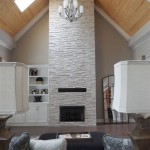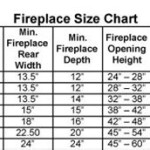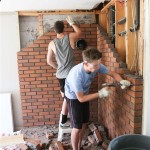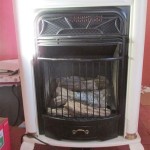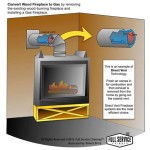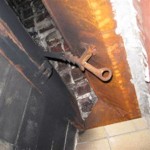Cement For Fireplace: A Guide To Choosing and Applying
Fireplaces are a beloved feature in many homes, providing warmth, ambiance, and a focal point for gatherings. Whether you're building a new fireplace or renovating an existing one, understanding the role of cement is crucial. Cement serves as the foundation for various aspects of fireplace construction, from the hearth to the firebox and even the surrounding masonry. This article explores the types of cement used in fireplaces, how to choose the right one, and the key steps for applying it effectively.
Types of Cement for Fireplaces
Not all cements are created equal, and selecting the right type for your fireplace is essential for safety and durability. Here's a breakdown of common cement options:
1. Portland Cement
The most widely used type of cement, Portland cement is known for its high strength and resistance to cracking. It's typically used for the hearth, firebox, and mortar between bricks or stones. However, straight Portland cement can be brittle and prone to cracking when exposed to extreme temperatures, making it less suitable for exposed areas.
2. Refractory Cement
Specifically designed for high-temperature applications, refractory cement can withstand intense heat and fire exposure. It's ideal for lining the firebox, where it protects the surrounding masonry from direct flames. Refractory cement comes in various types, each with different temperature ratings and properties.
3. Mortar Mix
Mortar mix is a pre-mixed blend of cement, sand, and other additives, often with specific properties tailored for particular applications. Mortar mixes for fireplaces are designed to withstand high temperatures, provide bonding strength, and resist moisture. They simplify the mixing process, making them a popular choice for DIY projects.
Choosing the Right Cement for Your Needs
Selecting the appropriate cement is crucial for a safe and long-lasting fireplace. Consider the following factors:
1. Location and Function:
The location and purpose of the cement determines its required properties. For the firebox lining, refractory cement is essential. Hearth and surrounding masonry might use Portland cement or mortar mix.
2. Temperature Resistance:
The heat exposure in the fireplace dictates the needed temperature resistance. Refractory cement comes in various temperature ratings, ensuring proper protection for different firebox designs and fuel types.
3. Bonding Strength:
Cement's bonding strength is critical for holding bricks, stones, and other materials together. Mortar mixes often contain additives to enhance bonding and prevent cracking.
4. Moisture Resistance:
Moisture resistance is essential for protecting the fireplace from water damage, especially in areas prone to humidity or spills. Some mortar mixes are specially formulated for moisture resistance.
Applying Cement for Fireplace Construction
Applying cement effectively requires careful preparation and attention to detail. Here's an overview of the key steps:
1. Prepare the Surface:
Clean the surface thoroughly with a wire brush or scraper to remove dirt, debris, and loose material. Ensure a smooth and level surface for optimal adhesion. Consider applying a bonding agent for increased adhesion if necessary.
2. Mix the Cement:
Follow the manufacturer's instructions for mixing the cement with water or other additives. Use a clean bucket and ensure the mixture is consistent and workable. Add water gradually, avoiding over-mixing, which can weaken the cement.
3. Apply the Cement:
Apply the cement evenly and firmly, ensuring adequate coverage and filling gaps between bricks, stones, or other materials. Use a trowel or masonry tools to spread the cement and achieve a smooth and level finish.
4. Cure the Cement:
Allow the cement to cure properly according to the manufacturer's recommendations. This typically involves keeping the area moist and protected from direct sunlight and extreme temperature fluctuations.
By carefully selecting the right cement and following the proper application techniques, you can ensure a safe, durable, and aesthetically pleasing fireplace that will provide warmth and enjoyment for years to come.

Naturecast Concrete Fireplace Surrounds Cement Elegance

Diy Concrete Cement Fireplace Sarah Sherman Samuel

Naturecast Concrete Fireplace Surrounds Cement Elegance

Diy Concrete Fireplace Makeover Before After Cherished Bliss

Concrete Fireplace Inspiration And Our Plan For The New Build Plank Pillow

Naturecast Concrete Fireplace Surrounds Cement Elegance

Naturecast Concrete Fireplace Surrounds Cement Elegance

37 Stylish And Catchy Concrete Fireplaces Digsdigs

Diy Concrete Fireplace Makeover Before After Cherished Bliss

25 Concrete Fireplace Designs That Inspire Shelterness
Related Posts

